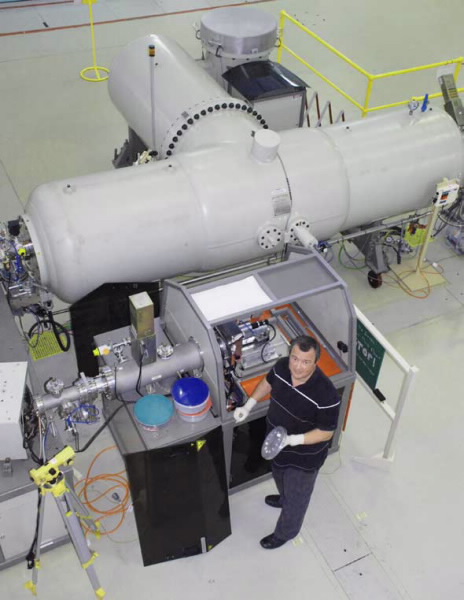A nuclear scientist at ANSTO had an affliction with a kidney stone and just like any curious scientist it got him wondering…
Senior ANSTO research scientist Vladimir Levchenko (pictured below) found himself as part of a startling statistic when he was told he had one of Australia’s most common disorders.
Kidney stones affect 1 in 10 Australian men, and 1 in 35 Australian women during their lifetime, however it turns out that very little is known about their growth cycle and longevity.
Like so many other scientists before him, a personal question has identified a gap in knowledge that has sparked a quest for answers that have broad applications.
As an expert in the use of accelerator mass spectrometry – a nuclear science technique – Levchenko decided to apply carbon dating procedures to kidney stone samples to see if he could ascertain their age.
It is believed this is the first time radiocarbon has been used to date a kidney stone. Known as ‘carbon dating’, the process involves measuring carbon-14 is present in a sample.
Stones are classified by the type of crystal they contain, and for the study Levchenko obtained the most common kind of stone, containing calcium oxalate. This allowed accelerator mass spectrometry to be used.
 |
| Research Scientist Vladimir Levchenko is standing next to the Star accelerator at the Centre for Accelerator Science |
With the help of ANSTO chemist Alan Williams, Levchenko’s chemistry and nuclear science measurements in 2013 indicated that this particular kidney stone had been growing steadily for 17.6 years! Since 1994!
Following his initial discoveries, Levchenko began collaborating with a Dutch research group led by Dr Dirk Kok, Head of the Department of Urology at Erasmus Medical Centre Rotterdam.
“Dr Kok wanted to send over two similar samples that his team were investigating, in order to find out if they were the same age, and if both contained phosphate,” said ANSTO scientist Mr Levchenko.
“All the way back in Lucas Heights in Sydney, our results showed that the two samples from the Netherlands were vastly different ages, only one contained phosphate, and the growth rates also varied.
“Information from the original “owners” of the stones identified that the stone containing phosphate came from a person who regularly consumed soft drink – which contains phosphoric acid.
“Once age was determined, we were also able to link that back to a trauma the patient with the older stone had received when they were much younger.
“This is a method of research that we don’t think has ever been used before, and previously we haven’t been able to make anything near the kind of connections the radiocarbon dating has allowed.
“It evidence like this that represents how valuable nuclear science research like that carried out at ANSTO is for the medical community.”
The research has been accepted by the journal Radiocarbon, and Dr Kok presented the research at a major urological conference in Spain in mid-September where it was received with great interest.
Media contact: Phil McCall +61 (0)438 619 987
Read more about the science of dating kidney stones


